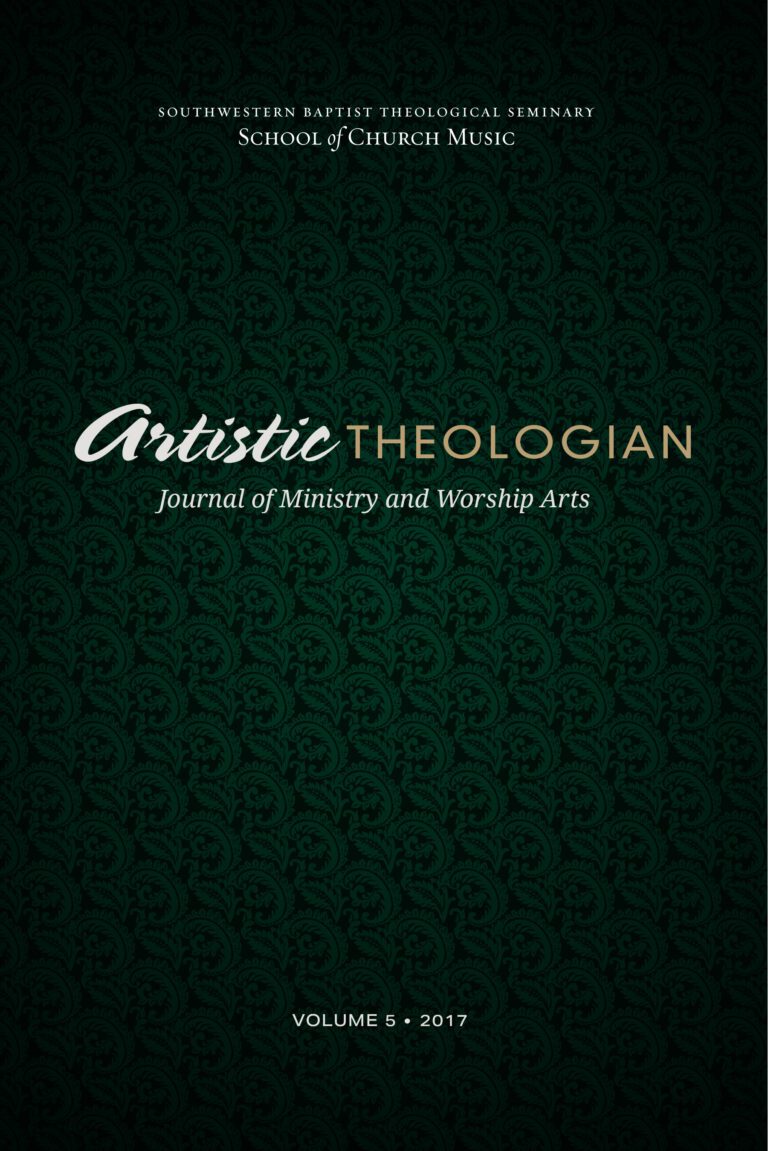
Forming Disciples through Corporate Worship
Artistic Theologian
Volume 5, Summer 2017
Editor-in-Chief: Scott Aniol
The Music Architect: Blueprints for Engaging Worshipers in Song, by Constance M. Cherry. Grand Rapids: Baker Academic, 2016. 272 pp. $22.99.
Constance M. Cherry is a professor of worship and pastoral ministry at Wesleyan University and holds a Master of Music degree from Bowling Green State University and a Doctor of Ministry in Christian Worship from Northern Baptist Theological Seminary. Cherry’s ministerial experience includes being a musician, worship leader, and pastor at churches that range from small to mega-church sizes. These churches have presented Cherry with various styles, people who have been musically literate and not, one race majority, culturally diverse, in rural areas and in metropolitan. The author clearly has both academic and vocational training and experiences that have prepared her to write on the topic of worship. By writing The Worship Architect, Cherry seeks to assist people who have been charged with musical leadership in a local church with carrying out their duties in a way that will glorify God and edify the worshipers. Throughout this book, Cherry seeks to help leaders understand their role in the music for worship, and she gives steps that will encourage the worshiper to engage in song.
Cherry takes the reader through the many different facets that are involved in using music for worship and what she feels is necessary to engage the worshipers in song. To begin she claims that it is not the music minister or worship leader alone who are to be considered when constructing a worship service. Each person who has a hand in the planning process and execution of the music in the worship service is what Cherry calls a “worship architect.” Cherry also gives a new title to the worship music leader, pastoral musician, which she feels more accurately implies the roles associated with this position.
The book then proceeds through the many aspects of music for worship beginning with the foundation, God-focused song. In the subsequent chapters, Cherry presents the reader with the roles of music in worship, creating a logical flow with the songs chosen, and creating a canon of songs for the local church. The perspective of the book changes a bit in the remaining chapters, focusing on the music for worship and engaging the congregation rather than the liturgical perspective from earlier. Cherry covers the topics of maximizing song forms (both long and short), the local church’s individual worship voice based on context, leading the congregation in song, helping the congregation realize their role in worship to encourage them to engage, the formative nature of music in worship, and the pursuit of spiritual leadership through excellence.
Cherry’s organization of the book follows a systematic process that allows the reader to easily understand her main point and purpose. The strength lies in the foundational beginnings that Cherry presents. She first allows the reader to understand the roles of the music leader, and she defines worship and builds upon it to show how the leadership can engage the worshiper in song when it is constructed in the manner she presents. Also, it is organizationally fitting that the first and last chapters address the music “architect” since that is the intended readership.
With the idea of the worship architect in place, Cherry claims that it is not just the educated music minster that should engage the ideas of this book. According to Cherry, those who are musicians, tech/media personnel, and pastors are meant to engage in these thoughts as well. However, Cherry does not give much scriptural basis for many of the things that she claims. For example, when Cherry gives her definition of worship, she gives no foundational Scripture on which to support her definition. This happens throughout the book with other claims. It is dangerous for the uneducated reader, who is one of the many this book is for, to not have this scriptural foundation because without it their views are based solely on Cherry’s word.
Particularly helpful were the chapters that address the engagement of the congregation and the formative role that music has on worshipers. These chapters clearly spell out the worshiper’s role in the worship service. To help encourage the congregation’s engagement, Cherry provides the reader with information about the congregation’s proper role in worship. Her summary gives the reader or music leader the proper tools to educate their congregation and encourage them to engage in the songs of worship with proper intent. They then participate fully for the sake of others in singing with understanding.
Overall, this book was well-written and proves to be very helpful to those who lead music for worship in the local church. Cherry’s organization flowed from foundation to application well, and she leads the reader to many thought-provoking conclusions. The thoughts presented by Cherry are clear and each gives one part of the blueprint to engage the congregation in song. If the two books that came before this, The Worship Architect and The Special Service Worship Architect, are as informative as this volume, they would be well worth reading.
Matthew Stringfellow
Southwestern Baptist Theological Seminary





